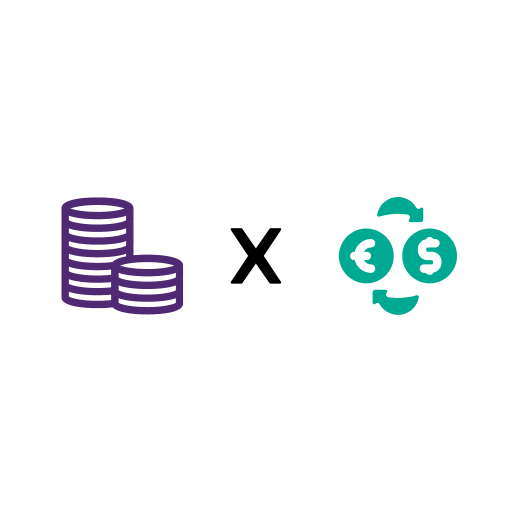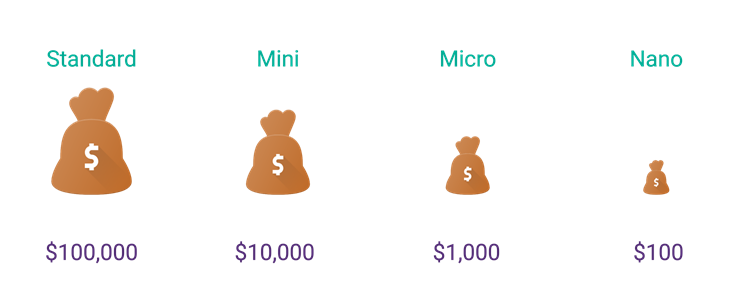How to calculate trading size
When making a trading decision, it's important to manage your risks. Most risk management strategies are quite simple to follow. Most professional traders never risk more than 1 to 5 % of their trading capital. But how do you calculate the trading size? How many lots should you trade for your risks to be around 1 % of your trading capital? The calculations are not that difficult if we consider the example below:
Let’s imagine a trader has just opened 1 standard lot for USD/JPY. What this means is that they want to buy dollars using 100,000 Yen.
Let’s say that the exchange rate is 1.3, meaning 1 JPY = 1.3 USD (this is not the real exchange rate of USD/JPY).
So, upon opening this position, the trader will be trading a volume which is calculated using the following formula:
{Lot size x exchange rate} = trading volume
Therefore, in the case of our example, the formula would work thusly:
Trading volume = {100,000 × 1.3}
This means that the trading size is $130,000. If the exchange rate was 1.4 then it would be $140,000, etc
To calculate how much 1 pip will earn, the USD/JPY pip count for 1 standard lot is equal to 1000/130.000 (If the exchange rate is 1.3) = 7,69 USD.
You can manually calculate the trade size and the risk to rewards ratio when you know the potential profit target in pips, as well as the stop loss target. You can also use trading calculators that are offered by the majority of Forex brokers. What's great about the cTrader platform is that the calculation is done automatically. This means that you simply fill in the amount of pips, and it will display your risks and rewards in terms of money. Then you can adjust the trading lots to fit your trading strategy.
Understanding the meaning of a lot in Forex is essential as it helps traders place right-sized orders.
Lot terms and their usage
You will meet lots in various contexts. Let's discuss each to better understand the meaning of a lot in Forex:
- Round turn lot
- Partial lot
- Lot
Round turn lot
Forex brokers often talk about round turn lots when they're referring to trading commission charges. When a trader opens a buy trade, but then closes it with a sell trade, we call this action a round turn lot. The volume here is calculated in both ways, meaning that the trader gets the trading volume for both buy and sell positions. The main source of income for Forex brokers is trading fees. They generate revenue using spread markups, or commissions. Usually, brokers offer spread-free accounts (which are charged commissions) or commission-free accounts (that are charged using spread markups). It's essential to learn how trading fees are collected to avoid opening an account with brokers that may overcharge you.
Partial lot
Trades can be open positions in partial lots, for instance, instead of 1 lot, you can purchase or sell 0.1, 0.2, 0.5 etc. lot sizes. For instance, when a trader opens a buy order for 1 standard lot but closes it with a sell order of 0.5 standard lots, we call it a partial lot. This means that the trader has not closed their buy position completely. The position is still active, but only a 0.5 lot size is left. Opening partial lot positions and closing orders partially is highly popular in Forex. Partially closing orders helps traders take some of their profits and still remain in trending markets. Traders also often use trailing stops or move stop-loss orders manually.
Lot
In trading, lots have various sizes to make trading accessible for traders that are short in funds. As already mentioned, there are Standard, Mini, Micro and Nano lots. Trading using Nano lots is not recommended for traders expecting substantial profits.. Many brokers do not offer trading using nano and micro accounts. However, when it comes to testing trading strategies live without risking too much capital, micro and nano trading accounts can come in handy
What is a nano lot? What do sizes change?
It is crucial to understand the definition of a lot in forex, meaning that it is critical for proper risk management. Beginners usually choose anything besides standard and mini lots. Trading using standard lots requires a large amount of trading capital.

It is much more likely for beginner traders to have limited budgets, which is why nano and micro-lots are typically the most popular. As already mentioned, professionals use nano and micro accounts for testing strategies live. There's one more reason to use small trading accounts. If you are opening a trading account with a new broker, a small trading account will help you understand the broker's policies and trading fees better.
Many trading platforms have their own methods of calculating lots. Some are more user-friendly, which makes order placement much simpler.